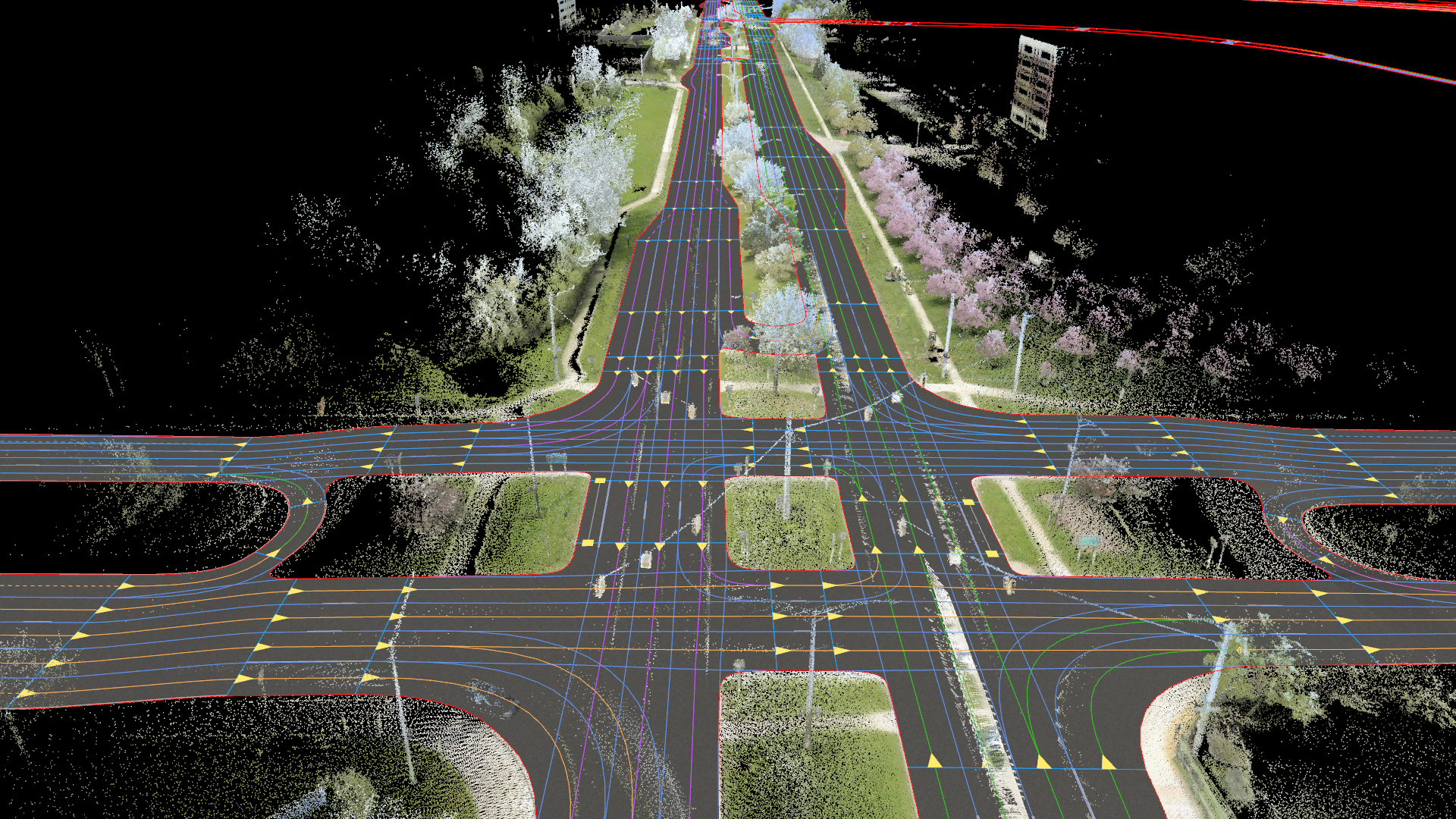Alexander Gerschenkron, the famous economic historian, once posited a benefit for those countries which come late to economic development: that they could introduce the latest technology and thus jump over some of the standard development paths followed by their predecessors . It is entirely possible to make the same observation of late-comers to ITS: that they can gain from the pains of those who went before and more easily implement best practice in ITS. As a consequence, it is entirely likely the Abu Dha

Abu Dhabi has created a spatial information framework which now allows it to easily and consistently share information from across its various modal divisions
Alexander Gerschenkron, the famous economic historian, once posited a benefit for those countries which come late to economic development: that they could introduce the latest technology and thus jump over some of the standard development paths followed by their predecessors .
It is entirely possible to make the same observation of late-comers to ITS: that they can gain from the pains of those who went before and more easily implement best practice in ITS. As a consequence, it is entirely likely the
The DOT for the capital city of the United Arab Emirates has all transport modes under its authority, a responsibility which it takes quite seriously.
For the last year and a half, it has been developing a comprehensive spatial data model designed to accommodate not only the requirements of each mode, but also provide a model allowing for the integration of information across those modes.
This data model is designed to manage and maintain all of the DOT's tabular and spatial data, and to provide the underlying data infrastructure supporting all of its subsequent business and operational workflows.
The DOT very consciously examined the operational practises of leading transportation agencies and designed this architecture with great care.
It was only after these spatial networks were built and attributed that the DOT began to layer on its subsequent business solutions (travel demand forecasting, asset and maintenance management and public transport AVL, amongst others) and this data framework also underpins the implementation of the DOT's ITS programme.
In addition, the DOT then built a series of information portals, each building on the same core networks and associated information.
First was an internal data portal which allows managers in each division and department to access a wide range of information necessary for their work.
Thus a highway engineer can access pavement information (and a detailed video log) from a map interface. A similar map interface lets the public transport division see the current location of a public bus, so not only do they share the same base network but they also can share the resultant information (which can often be real-time information).
The internal data portal was followed by a public-facing traveller information web portal which is also fully multimodal. This means that the public can not only see current highway conditions, road construction and detours along with parking locations but also bus, ferry and airline schedules, bus routes and stops and points of interest along the route, as well as the current location and timed arrival of buses. Additionally the portal allows individual citizems to report an incident or condition requiring the DOT's attention, such as a pothole, which is then sent to the DOT's customer care division for further action.
The key point to be emphasised is that it has created a spatial information framework which now allows it to easily share information from across its various modal divisions in a consistent way, and which allows it to build fully integrated systems utilising this framework.
Compare that with the current state of information silos typical in many similar agencies in North America and Europe; it is this careful information architecture planning that will allow Abu Dhabi's DOT to make quite significant achievements, and even come to lead in best practice terms, in a very short period of time.
Eastern Europe
It is no surprise that many of the roadway administrations in Eastern Europe have also been able to achieve significant advances in roadway management and ITS.In this manner, the same spatial data and information is designed to support internal asset management practices as well as the public traveller information portal listing current traffic conditions, and the traffic control and monitoring system.
Information, such as that on planned roadway construction for example, is collected once and shared among a number of systems without having to redundantly re-enter the information into several others.
For instance, the bridge data that is part of the asset management solution is provided seamlessly to the over-limit truck routeing solution which is built on the same spatial data infrastructure.
The public-facing website not only includes the standard real-time traffic, incident and weather information but also includes information about locations which suffer high accident rates and road noise information. A similar public-facing website in Vilnius utilises the same data management concepts to deliver a multimodal traveller information portal for members of the public.
In this way, the National Road Administration has established a consistent spatial data framework which allows for the seamless sharing of data across its various business units whilst using the same information to form the foundation of ITS deployments. Meanwhile, the information is similarly fed back into its subsequent planning processes.
In 2005, the national government in the Czech Republic outlined the concept of a unified traffic information system. This was designed to facilitate the creation of a national interoperable system between the regional traffic centres, police, fire and emergency response providers and lead to the creation of a national Traffic Management and Information Centre (TMIC).
Data from a number of ITS technologies (including cameras, traffic detection and meteorological systems) along with information from a nationally standardised road maintenance and closure registry is brought together in a comprehensive spatial data management system.
In addition, a communication framework among the regional traffic centres, police, fire and emergency response providers was established, along with cross-border data exchanges with Austria and Germany.
This comprehensive spatial data management system, along with the extensive data communication framework, has become the backbone of the national traffic monitoring and management system.
A wide array of information is now gathered into a centralised spatial data management framework to support the national TMIC. This information is also used for a large number of statistical analyses of traffic patterns and accident rates as well as to gauge the effects of a large number of traffic scenarios for better traffic control.
In this way, the GIS both supports a national common operational picture of current traffic conditions and incidents whilst also being used for a wide array of spatial statistical analyses designed to deliver data back to the nation's transportation professionals.
North America
A similar approach to creating a comprehensive spatial data framework which then supports all subsequent business activities has been followed by the Missouri State Department of Transportation (MoDOT).MoDOT has created a spatial data infrastructure which supports the full range of business applications, from asset and maintenance management to providing the foundation for the agency's ITS deployments.
Information from the current bridge maintenance and reconstruction program is seamlessly fed to the agency's public information website. The agency's video log information (showing bridge condition) which is collected for its pavement and maintenance management programme is seamlessly incorporated into the public application, along with expected duration of the road closure and suggested detours.
This same information is mirrored on the larger state-wide traveller information site, which includes current information on flooding (common in the spring in Missouri), weather conditions, construction and road closures, along with the more typical traffic conditions and traffic cameras.
All of this information is integrated with the DOT's linear referencing system which is used to manage all of the DOT's various assets. The point to be made is that MoDOT's ITS systems are an integral component of the overall data and IT architecture used by the agency for many of its routine business functions, which was not built as a typical information silo divorced from the more standard data and information work flows.
While there are certainly many better-known ITS deployments among national roadway administrations and departments of transportation, these examples represent a growing trend among those agencies that have come to ITS in that second wave, which have placed a strong emphasis on creating a comprehensive spatial data architecture to manage all of their various information workflows, and which have sought to avoid some of the common information silos more typical of the first generation of ITS implementations.
Additionally, as we have seen in a number of cases, these agencies have been able to avoid some of the more common difficulties associated with inter-agency coordination and have been able to construct comprehensive traffic management and incident response systems integrating a number of different agencies. That in many respects reflects the real promise of ITS: to be able to integrate a large amount of information to better manage roadways, whether by reducing construction times or clearing incidents faster. The key in each of these cases is access to spatial information which helps to facilitate these efficiencies.
%$Linker:











